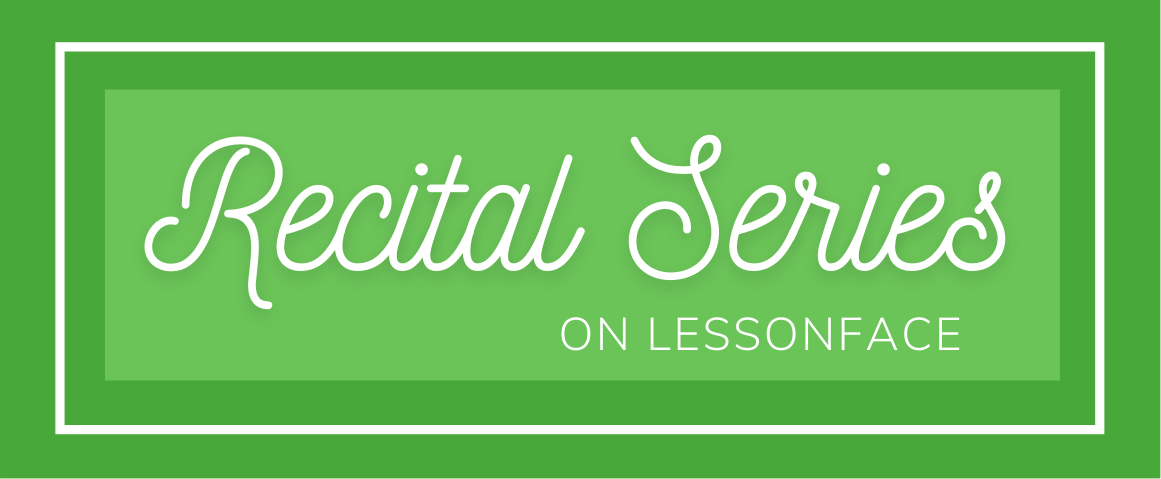Hello all!
This thread is intended for the current group class 'Music Theory for Guitarists'.
It'd be terrific to have students ask any questions here, for the entire group to benefit from. I'll respond as soon as I can, and anyone else (student or teacher) who can advise, or otherwise contribute is also welcome to jump in.
Discussion about anything related music theory and guitar is also welcome.
Thanks for your participation!





I'll get the discussion started!
(1) There was a question today about ear-training apps. Here's some information from a recent post that talks a little bit about what's out there. Have you used an ear-training app before? Would you recommend it? We don't have time to get into that during class, but recommendations and discussions are very welcome here : )
(2) Second, in the previous class (#2) I mentioned a book that I often recommend on music theory called 'Edly's Music Theory for Practical People' It has a casual, conversational tone, yet explains the important concepts very clearly. It's not geared towards guitarists at all, but it would be a great supplement to this course and help you reinforce what we're covering, if you're interested.
(3) Today's class on major, minor, and perfect intervals and how to name them was the most complicated so far. What questions do you all have?
You can always ask or comment by private message to me if you prefer. But I'll be extra grateful if you ask them here. So will your peers, because some of them almost certainly have similar doubts that the answer will clear up.
Looking forward to your questions, comments, and contributions!
Leah
Hi, Leah. In class while you were explaining the Majors and minors, it mae sense. However, now that I am looking at the exercises, I find myself not knowing where to start.
Perhaps, I just need to watch the video of the lesson tomorrow when it is posted.
Specifically, you mention diatonic intervals. Are these the notes which fall within a key/scale?
On #2 of the Exercises : Guitar in Hand. We are to find two random notes and determine the interval assuming that the first note is the tonic?
I am sorry if these are silly questions. I am just seeking clarification.
Eric
Hi. Leah. As you went over the Major and minors in class yesterday, it made sense. However, now that I am attempting the written exercises on my own, I am finding myself not know ing how to begin.
I plan to watch the lecture again after it is posted.
To complete the written exercises, do we just count the number of 1/2 steps between the notes, and then refer to the chart in the notes to identify them as M6 or m3, or whichever applies?
Thanks for any clarification you may offer.
Eric
Hi Eric! Thanks so much for asking here! I bet some others have similar questions : )
Q: Specifically, you mention diatonic intervals. Are these the notes which fall within a key/scale?
Yes, diatonic intervals are ones that can be built from the TONIC of a major scale, ascending to any scale degree. The diatonic intervals (within an octave) are PUnison, M2, M3, P4, P5, M6, M7, POctave
Q: On #2 of the Exercises : Guitar in Hand. We are to find two random notes and determine the interval assuming that the first note is the tonic?
A: To get technical, I'm not sure I'd use the word tonic in respect to intervals, since here we're not talking about any key or scale - just a r andom interval. But assume that the first note is your starting note, and then you're either ascending or descending to the 2nd note, so your answer would be something like 'I'm ascending M3 from E to G#' or 'I'm descending a m7 from D to E'
Q: To complete the written exercises, do we just count the number of 1/2 steps between the notes, and then refer to the chart in the notes to identify them as M6 or m3, or whichever applies?
It would be more practical and useful to not rely on not counting half steps or referring to charts. Instead , determine FIRST the size of the interval (the number, 6 or 3), and then decide whether it's a Major, minor, or Perfect interval from your knowledge of the Major scale and from yesterday's lesson.
Also, both while you wait for the video, and once you have it - go back to the Lesson Notes frequently. They're an outline of what I cover in the video and may help clarify the process.
Thanks again for asking Eric!
Hi Leah, I'm sure I will have a million and one questions after viewing the lesson video. Am I the only one who can't find it? I usually get email notification when it posts but there's been no notification thus far, some 2+ days after the lesson--seems a bit longer than normal ...
Hi, Leah. Sorry to be a pest. On page three of the written exercises, for number 4c. did you mean to write "By what interval does the tonic move up as we add flats"? It currently repeats 4a.
Also, did you get a chance to upload the key for this week's written exercises? I do not see them in the folder.
HI Eric, yes, of course, I meant flats, thanks for catching that!
The key has been there since Sunday night after class. I just double checked. Are you sure you can't see it? It's titled 'Class #3 (6-14) Key to Written Exercises'
Hi all!
I just gave the answer key one more check and found a few errors, which are now corrected. Please use the current version to check your answers.
Also, one thing I wanted to over-emphasize:
Please don't use the chart of number of half-steps to name the intervals in written exercises. Much better if you use the method we went over in class where you (1) determine the SIZE of the interval (a number from 1 (unison) to 8 (octave), and then (2) determine the QUALITY (major, minor, and perfect) using your knowledge of major keys and everything we discussed in class.
You can use the interval chart and half-steps to check your work - before you go to the answer key, that is. That's advisable, it will reinforce what you've learned.
But don't rely on that chart of half-steps to find interval names. First of all, the number of half steps will not give us all the info we need to know come next class. Second, I want you to become independent of charts in this course, and the best way to do that is to practice thinking about these things over and over : )
Hope that's extra clear now, if it wasn't before.
Hi Roger, I received the email notice that the video had uploaded on Monday. I believe all emails go out together. Check your spam and promotions folders perhaps? In any case, I forwarded to you!
All videos so far -- plus the links to the course materials AND the forum discussion -- are on the course page.
Has anyone else had trouble?
Thanks, Leah, you were right--the email somehow ended up in my Spam. First time that's happened with a Lessonface notification...
Hi all! In case anyone else has had an issue with this - starting with our next class the video uploaded to the class page will be completely 'speaker view' rather than a combination of speaker view (usually me, sometimes student who is addressing/playing for the group) and gallery view (seeing the whole class in a grid).
If anyone needs me to demonstrate something from a past class that they couldn't pick up from the grid view, let me know, and I'll be sure to do a 'retake' next class.
Thanks to the student who let me know that this was still an issue (even after I thought I'd fixed it)!
Leah
Hi, Leah. Thank you for today's lesson. It was great!
I have completed the written exercises by filling the notes into the chart. The part that I am not sure of is naming the chords. How can I know the name of the chord? Is there a reference where I can see the note configuration for different chords? I am lost on this part.
Actually, I think that I just figured it out. I am to refer to the scale for the note in the scale box and determine whether the chord is a major, minor, or diminished. Is that correct?
Hi Eric! thanks so much for asking in the forum : )
To identify the chord from given notes, try thinking about it this way. You know you have SOME type of Root (1), 3rd, and 5th. You need to figure out the qualities of the 3rd and 5th are to name the chord.
1 3 5 = Major . If it's a major chord, the 3rd and 5th should be part of the root's major scale!
1 b3 5 = minor. If it's a minor chord, the 5th will be in the major scale. But the third will be a half step lower than the 3rd degree of the major scale.
1 b3 b5 = diminished.
Another way to figure it out is to identify the intervals between the root and 3rd, then the root & 5th. For both, your only options so far are Major 3rd and minor 3rd. Everyone is pro at distinguishing a major 3rd from a minor third by now, right?
M3 + m3 = Major
m3 + M3 = minor
m3 + m3 = diminished
There may be chord charts out there in the internet that spell out every possible triad for you. But don't use them. Don't even look for them. The whole point is to be able to figure it out yourself.
Actually, I think that I just figured it out. I am to refer to the scale for the note in the scale box and determine whether the chord is a major, minor, or diminished. Is that correct?
I think I figured it out!
Hi Eric! I saw this additional comment before, but I didn't understand 'scale box'. I stand by my two explanations above of how to 'identify the chord' given the three notes of the chord. There is a diagram at the end of the lesson where the formulas for the three chord types are summarized. Maybe that's what you're referring to? If so, yes, use that : )
[[{"fid":"60638","view_mode":"wysiwyg","fields":{},"type":"media","field_deltas":{"1":{}},"attributes":{"class":"media-element file-wysiwyg","data-delta":"1"}}]]
This should get you through all those exercises : )
(ignore the aug and sus chords)
Very good explanations on naming triads.
Thanks : )
A few weeks ago a student asked me this question pertaining to Class#4 on intervals. I'm just now catching up on private messages and thought it would be useful answer it here:
A followup question to last week's lesson that I forgot to ask (this, I suppose, should be in the group forum but now that I've started here...). In doing the exercises involving the intervals in major scales, it becomes obvious that in the different keys the resulting intervals for 3rds, 6ths, 2nds and 7ths, etc. all follow different sequences (I have sent along a photo of one of my pages). If you just read the two resulting interval lines from the 3rds and 6ths page it looks like this:
M3, m3, m3, M3, M3, m3, m3, M3 (thirds)
M6, M6, m6, M6, M6, m6, m6, M6 (sixths)
Of course the patterns all change for 2nds, 7ths, P4's and P5's. I think I understand why they're all different, I guess what I'm wondering is whether there is some secret shortcut to learning all these sequences or if they just have to be memorized. Your input and insight is appreciated. I'm sure the rest of the class might also be wondering.
This is my response, but I'd welcome any other takes (particularly from teachers if any stumble across this forum!!)
I wouldn't necessarily recommend memorizing the patterns of major-minor 2nds, 3rds, etc. I don't think about them that much in my every day musical life, and I don't think it would serve you to be able to spout off from memory: M7-m7-m7-M7-m7-m7-m7-M7.
I would have to play through a particular key to tell you the pattern of major and minor in 7ths or 2nds for example. HOWEVER, it would take me very little time to come up with that pattern, because I know my keys well.
So use these patterns to get to know your keys in a different way. If you know your keys well -- both theoretically and on your instrument -- you should be able to play scales in patterns/intervals without tons of thought and calculations. And this is what we're going for. Practice playing scales in various patterns and intervals. Start to hear what it feels like to stay within a key when you play 7ths. For example C - B, D - C, E - D, etc... You can use the patterns you worked out and written exercises as a guide, but really, you already know it, and your ear should help you stay within the key and find the correct version of each 7th.
Hope this is useful!
Leah
Hi, Leah. Althought came to mind while I was reflecting on the sequence of these classes.
For beginning theory students, such as myself, it may be helpful in the beginning to have the second week of a topic used as a review rather than giving the week off. That may reinforce the learning of the basic concepts which will help later in the course.
This is just a thought. You have a done a great job putting this course together. I recognize that I did not see the importance putting the time in on scales early in the course. I should have put more time in learning and practicing scales earlier. Now, I am trying to catch up.
Thank you for your patience in class.
Hi, Leah. Althought came to mind while I was reflecting on the sequence of these classes.
For beginning theory students, such as myself, it may be helpful in the beginning to have the second week of a topic used as a review rather than giving the week off. That may reinforce the learning of the basic concepts which will help later in the course.
This is just a thought. You have a done a great job putting this course together. I recognize that I did not see the importance putting the time in on scales early in the course. I should have put more time in learning and practicing scales earlier. Now, I am trying to catch up.
Thank you for your patience in class.
Hi, Leah. Althought came to mind while I was reflecting on the sequence of these classes.
For beginning theory students, such as myself, it may be helpful in the beginning to have the second week of a topic used as a review rather than giving the week off. That may reinforce the learning of the basic concepts which will help later in the course.
This is just a thought. You have a done a great job putting this course together. I recognize that I did not see the importance putting the time in on scales early in the course. I should have put more time in learning and practicing scales earlier. Now, I am trying to catch up.
Thank you for your patience in class.
Hi, Leah. I think I found an error in the key. Page four of the key #4, the first A major exercise- I believe it should be I-V-vim-iiim-IV. Is that correct?
Hi, Leah. I think I found an error in the key. Page four of the key #4, the first A major exercise- I believe it should be I-V-vim-iiim-IV. Is that correct?
Hi Eric - that's absolutely correct, thanks, I just made the change! Does this mean you're understanding your doubt from yesterday's class now, too? Because I think it was on just this topic.
And thanks for your suggestions about the course! Another student had a similar suggestion. I think next time I do the class, I'd like to divide it into different course, Theory 1 (first half) and Theory II (second half), to be able to spend two classes on each unit. THat way we could do one mostly theoretical class, and one class where we focus on putting it all into practice. I think you're right that leaving beginning guitarists/theory students to their own devices to practice scales and other concepts is just a bit much to ask, not very realistic.
Hi, Leah. Thank you for the response. Yes, it seems that I am understanding the material better. I just had to sit with it, and go through the exercises. Now that the written exercises are finished, I need to focus on implementing them with the guitar. That is where the difficulty comes in for me.
Your idea for splitting up the class is a good one! Yes, leaving us to our own devices may not be the best way for us to learn the content. I know that I do better with more accountability. It is that extra push of motivation. :-)
See you next Sunday.
Hi, Leah. Can you clarify something for me. In the G major scale F is flat. When we write out the G minor scale B, E and F are to be flatted. Right? Would this make Fbb?
Hi Eric! In the G major scale F is sharp. When you write out a G minor scale, B and E are flat. And the F# you lower a half step to F natural.
Leah
Hi Leah, in last week's Lesson 8 homework (Page 1), shouldn't the 7th and 8th degrees of the Bm harmonic scale be A#, then B?
Yes it should be - I just made the change. Thanks so much for the correction, Roger!
Hi all, thanks so much for the feedback many of you have offered on the course! It was really helpful to me both in managing the class plan for this past course, and in thinking about how to offer the class in the future.
We had a pretty wide mix of experience levels in this course - some of you found it very hard, and others found it easy. But one thing nearly everyone agreed on was that you'd like more guidance in the guitar exercises portion and to be held more accountable for doing them. That is, walking the class through more exercises, rather than just explaining what to do and leaving you to your own devices. So the next version of this class I'll be dividing into two parts and moving more slowly through the material, to allow time for doing the guitar exercises together as a class.
A few of you expressed interest in repeating the class at the slower pace, so here is the link to sign up: Music theory for guitarists. It starts September 20th. In case any of you are interested in flamenco guitar, I'll also be offering this Fall flamenco workshop in Alegrias.
One final question: Do any of you have experience (good or bad) purchasing a guitar online? I've had a lot of students ask me for recommendations, and I'd love to be able to advise better. If you have any thoughts, I'd be grateful for any contributions in this forum thread.
Thanks for being part of this course, and hope your theory knowledge is serving you well so far!
Leah
All,
These are the two books I mentioned during class for guitar song writing and arrangement. They are available in amazon and also used. He has more publications than these two books.
https://rikkyrooksby.files.wordpress.com/2010/07/songwriting-sourcebook.jpg
https://rikkyrooksby.files.wordpress.com/2010/07/htwsog-revised-edition-2009.jpg
Also, a while back I learned about CAGED and I thought I'd share with you a really good reference that helped me a lot.
http://communityguitar.com/students/Resource_Sheets/files/CAGED_Primer_11.pdf
Have a great week!
Elsa
Hi Elsa, thanks so much for sharing these resources! The CAGED primer is really useful and well presented, I will definitely refer students to it. The books look really interesting too. I imagine several students in the course can make use of them.
Also, thanks all for being part of the 2nd edition of the theory course, I really enjoyed teaching it : ) I'll keep you all posted on Part II. Hope you all have a good holiday weekend!
Hi Leah, In a major scale, C for example, the steps in the scale can be read as tone, tone, semitone, tone, tone, tone, semitone, am I correct? Can this same ladder hold true for all major scales? Say for G, g-a/tone, a-b/tone, b-c semitone, c-d/tone, d-e/tone, e-f#/tone, f#g/semitone. It seems that if I remeber that e-f and b-c are semitones, then if I apply this ladder I can get the scale correct, does that make sense?
Hi Lou, yes, that's exactly the way you should think about the major scale. The major scale sounds the way it does because of the sequence of whole steps (tones) and half steps (semitones). It's useful to memorize the order (the way you wrote it out), but if you forget, you can always use the C Major scale for reference. That is, all the natural notes from C to C will give you a major scale, and thus the order of half and whole steps that applies to all major scales.
Hi Leah, We're at the end of Music Theory 1 class, this might be a dumb question but if I'm playing in a different scale such as a flamenco scale using the Phrygian mode the chords would be according to that scale. Is that right? The progression of the scale would be HWWWHWW. I'm not sure if I'm on the right track, the chords get more complicated or maybe unfamiliar. Is it the formula, same as root, 3rd and 5th? (C Phrygian, 4 flats in the scale, Ab, Bb, Db,Eb is still some kind of C, E, G or C, Eb, G for the chord)?
Hi Lou, this is not a dumb question at all, really interesting one! Phrygian Mode is based on the 3rd degree of the major scale, and you're correct with your half/whole steps sequence. It's true that C phrygian is complicated, but in flamenco we don't encounter it often. Try playing around with E Phrygian (notes/chords of C Major) and A Phrygian, (notes/chords of F Major), and that will be more relevant to what you play in flamenco.
Hi all! I'm going to take a minute to elaborate on some points I mentioned in last week's review class.
1. The concept of playing scales in 3rds, 6ths, and octaves
2. The CAGED system and how to think of it in a way that reinforces your theory knowledge (rather than just an abstract memory tool)
Neither are essential points that we'll be building on in the next classes, so don't worry about mastering them immediately. Treat them as practice tools, as both are very useful for applying your theory knowledge to your guitar playing.
1. Scales in 3rds
2. Scales in 6ths and Octaves
3. CAGED system
Hope these help! Leave comments below with any questions you might have :)
Leah